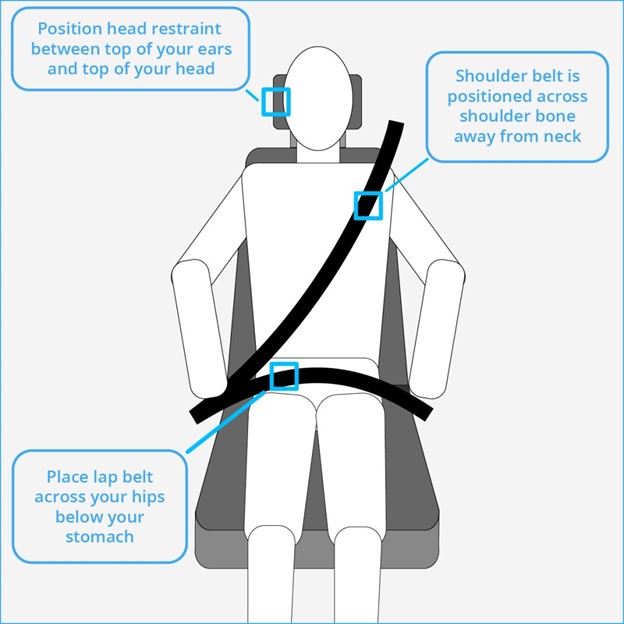A nurse is applying a belt restraint to a client who has become physically aggressive. Which of the following actions should the nurse take?
Apply the restraint under the client's clothes.
Tie the restraint to the railing of the client's bed.
Place the client in a sitting position.
Ensure the restraint is placed across the client's chest.
The Correct Answer is C
a. Applying the restraint under the client's clothes: Restraints should be applied over the client's clothes to avoid direct skin contact and reduce the risk of skin irritation or injury.
b. Tying the restraint to the railing of the client's bed: Restraints should not be tied to bed rails or any other fixed objects. This can increase the risk of injury to the client and should be avoided.
c. Placing the client in a sitting position is appropriate when applying a belt restraint, as it helps prevent respiratory compromise and allows the client to maintain a safer and more comfortable posture.
d. A belt restraint should be placed around the client's waist, not across the chest, to avoid restricting breathing.

Nursing Test Bank
Naxlex Comprehensive Predictor Exams
Related Questions
Correct Answer is D
Explanation
Correct answer: D
a.Artificial flowers are generally considered safer than fresh flowers because they do not harbor water, which can be a source of bacterial growth. However, they can collect dust, which might carry pathogens, though this is typically a lesser concern compared to fresh flowers.
b. Being assigned to a room with negative airflow is actually beneficial for a client with an immunocompromised condition, as it helps prevent the spread of airborne pathogens.
c.Hard boiled eggs do not inherently increase the risk of infection. However, it is important to ensure that all food items are properly prepared, handled, and stored to minimize the risk of foodborne illnesses.
d. Fresh fruit can harbor bacteria and other pathogens on their surfaces, which can pose a significant risk to a neutropenic patient. Even with thorough washing, there is a higher risk compared to cooked or pasteurized foods.
Correct Answer is B
Explanation
Correct answer: B
A. Place no more than one small pillow in the crib
The American Academy of Pediatrics (AAP) recommends that infants should sleep on a firm and flat surface without any pillows, blankets, or soft bedding. These items can pose a suffocation risk.So, the nurse should advise against using any pillows in the crib.
B. This is agood recommendation. Bibs can be a choking hazard during sleep.Removing them ensures the baby’s safety and reduces the risk of accidental suffocation
C. Making sure the crib mattress is soft in (option C) is not recommended. The crib mattress should be firm to provide a safe sleeping surface for the infant. Soft mattresses can increase the risk of suffocation.
D. Starting to use a highchair for feedings at 3 months old in (option D) is not typically necessary or developmentally appropriate. At this age, infants are typically fed while being held in a caregiver's arms or in a reclined position, such as in a baby bouncer or supported seat.
Whether you are a student looking to ace your exams or a practicing nurse seeking to enhance your expertise , our nursing education contents will empower you with the confidence and competence to make a difference in the lives of patients and become a respected leader in the healthcare field.
Visit Naxlex, invest in your future and unlock endless possibilities with our unparalleled nursing education contents today
Report Wrong Answer on the Current Question
Do you disagree with the answer? If yes, what is your expected answer? Explain.
Kindly be descriptive with the issue you are facing.
